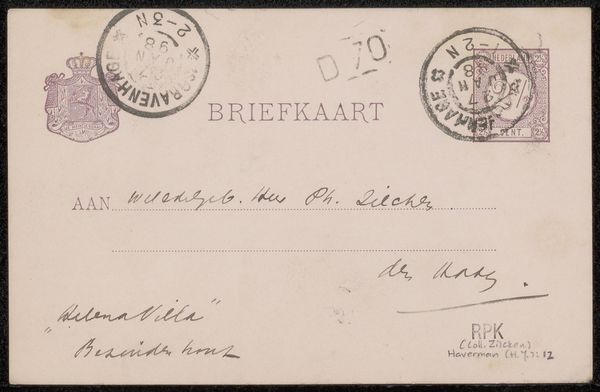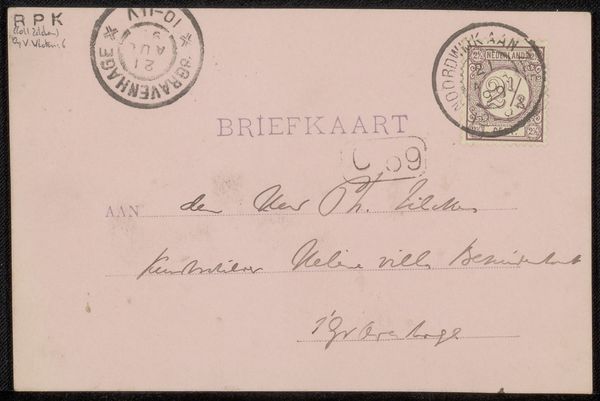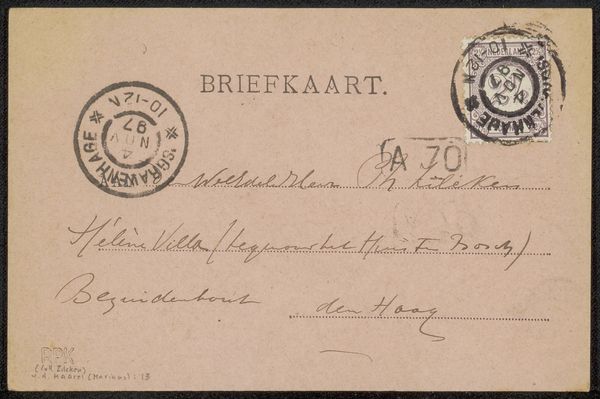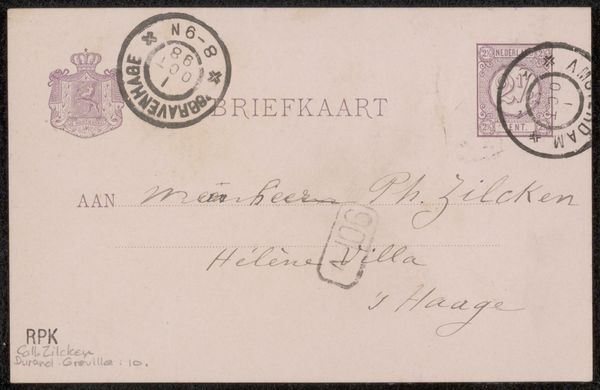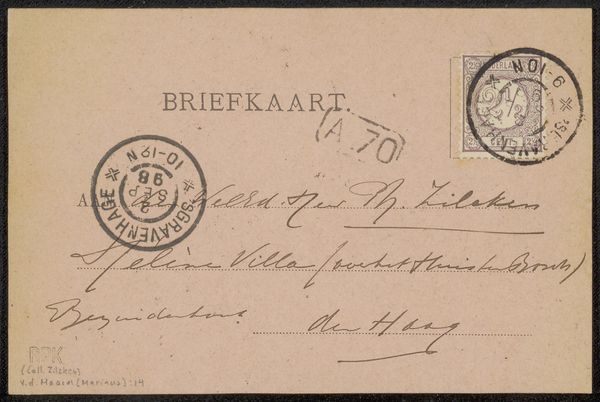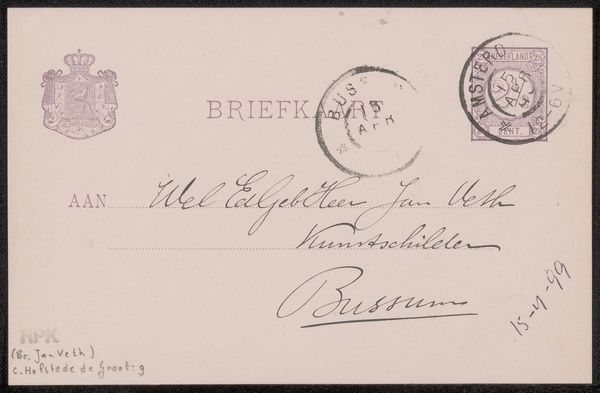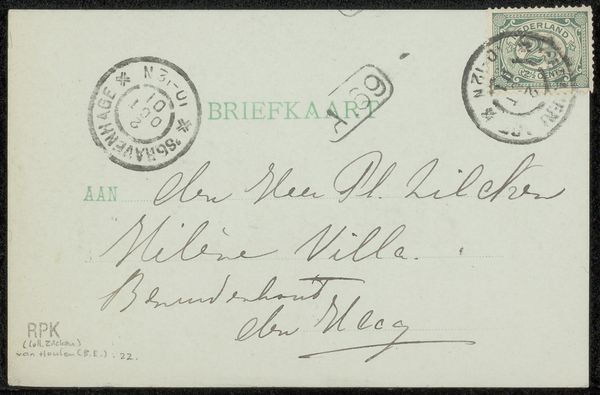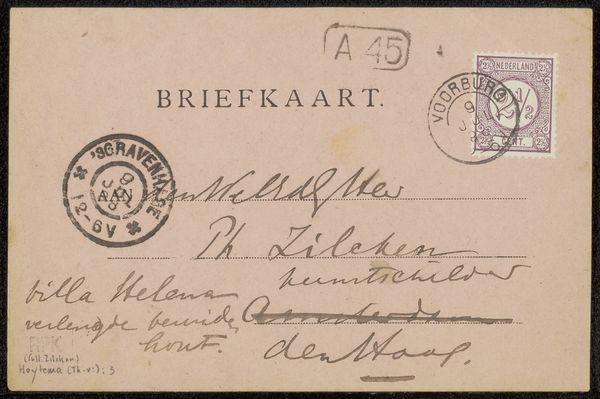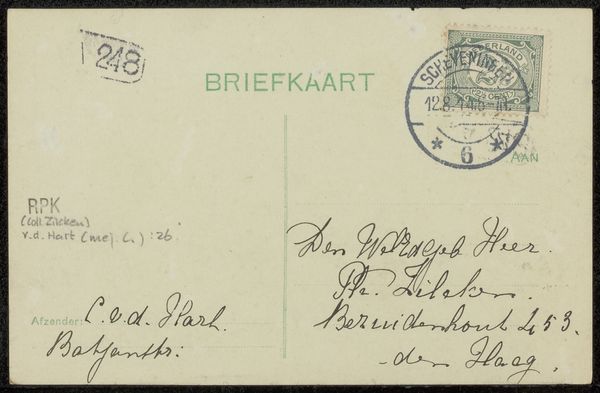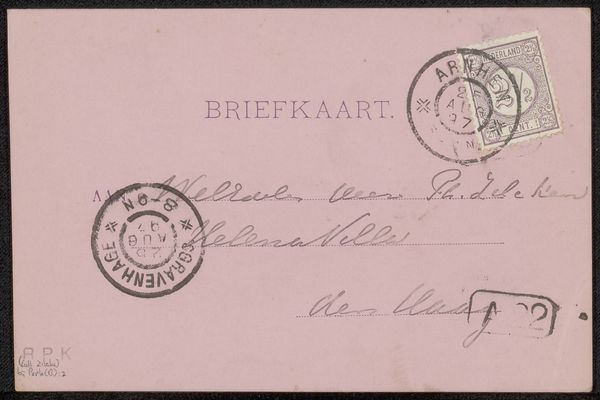
drawing, paper, ink, pen
#
drawing
#
comic strip sketch
#
hand-lettering
#
old engraving style
#
hand drawn type
#
hand lettering
#
paper
#
personal sketchbook
#
ink
#
hand-drawn typeface
#
pen-ink sketch
#
pen work
#
sketchbook drawing
#
pen
Copyright: Rijks Museum: Open Domain
Curator: Welcome. Here we have a glimpse into the correspondence of Richard Nicolaüs Roland Holst, with his "Briefkaart aan Philip Zilcken," dating back to before 1894. It's a drawing, rendered in pen and ink on paper, held in the collection of the Rijksmuseum. Editor: My first impression is one of intimacy, a fleeting moment captured. It's so small, humble almost, yet those postal stamps, the looping script… there's a delicacy to its impermanence that resonates. Curator: Absolutely. Consider the materiality itself – humble paper, common ink, a utilitarian object transformed through Holst’s artistry. It speaks of accessibility, a democratized form of visual communication, bypassing the elitism often associated with "high art." Think of the postal system and the labor involved; it speaks to a very specific, accessible kind of social engagement. Editor: Yes, but that very accessibility belies the symbolic weight each mark carries. Stamps, script, addresses are all encoded with layers of social meaning. Those postal marks tell us not just the date but also of movement, of connection and distance, the exchange of ideas, the flow of lives intersecting through physical space. The hand written name itself becomes an intimate token. Curator: Indeed. But I would argue those stamps also signify process – governmental institutions, the labor of the postal workers, even the production of ink and paper. The material realities shape its very existence, shifting our perspective beyond the mere sentimental. Editor: Fair enough, yet consider that these mundane elements accrue symbolic resonance over time. We view them now, removed from their immediate context, and they evoke an almost melancholic feeling of the past, of forgotten connections, of lost intimacies rendered poignant by their very obsolescence. The postcard acts like a tiny time capsule of 19th Century exchange, revealing our nostalgia for that time. Curator: That tension between historical process and lasting symbolism really unlocks the significance of this unassuming artwork, doesn't it? Thank you. Editor: Precisely. It reminds us to consider not just what art is, but how it moves through and shapes the world, and is in turn shaped by the same systems.
Comments
No comments
Be the first to comment and join the conversation on the ultimate creative platform.
